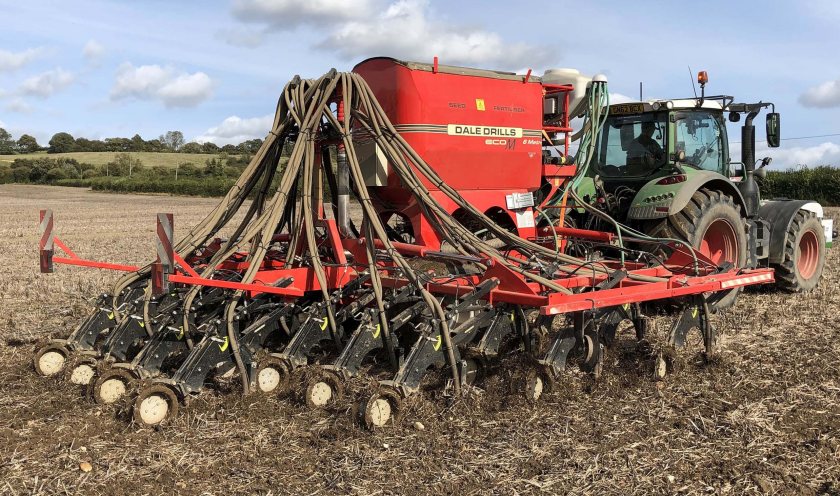
Numbers of farmland birds on fields established by direct drill or min till can be 1000% higher than conventionally established areas over winter, according to research.
The independently monitored research follow over three years of monitoring on two farms, undertaken by the Sustainable Farming Initiative (SFI) and Syngenta Conservation Agriculture.
The research is studying the field-scale agronomic, economic and environmental implications of conservation agriculture establishment techniques on contrasting light land, at East Lenham in Kent, and the heavy soils of Loddington in Leicestershire.
On the Game & Wildlife Conservation Trust (GWCT) Allerton Project farm, at Loddington, areas established with these techniques recorded an average 1011% more birds over the winter, compared to crops established with conventional plough-based tillage.
At East Lenham in Kent, the average numbers of birds recorded on the ground over the past three winters was 145% higher in fields established by direct drill/light till.
Birds were monitored once a month on the different establishment system throughout the winter, with transects walked across each area to count birds on the ground. Numbers recorded were the annual average seen on each system.
Results of detailed monitoring over the years of the ongoing project has confirmed the trend towards improved soil health and biodiversity with conservation agriculture techniques, reported Syngenta sustainable farming manager, Belinda Bailey.
“Bird numbers are likely to be attracted to more favourable winter-feeding resources associated with min till or direct drill crop establishment systems, where food remains on or close to the surface.
"Higher bird activity is a very positive indicator of biodiversity in fields under conservation agriculture,” she highlighted.
GWCT ecologist, John Szczur, responsible for the project in Kent, reported that numbers of all the insect and seed feeding bird species recorded were higher on the conservation agriculture plots at East Lenham last winter.
That included over two and a half times as many skylarks and double the number of meadow pipits as on conventionally established plots.
Snipe, grey partridge and red-legged partridge were only recorded on the direct drill areas or cover crops in the conservation agriculture system.
In previous years, monitoring has seen up to 55 skylarks on conservation agriculture established plots at Loddington, compared to just four on the conventionally established areas.
Skylark numbers were significantly lower across all systems in the very wet winter of 2019/20, but had recovered well on the conservation agriculture systems last year – although still with no sightings on the conventionally established plots.
The research has also given an in-depth study of earthworm numbers - an important source of food for some bird species - under different establishment systems.
Results have seen consistently higher numbers of earthworms under both direct drill and min till establishment, compared to conventional tillage.
Earthworm numbers have responded most positively on the light soils in Kent, with an average 75% more with direct drill over conventional tillage, but from a relatively smaller base.
At Loddington, where earthworm numbers were typically 10 times greater in the heavier soils, the increase from conservation agriculture was 8%.
Endogeic earthworms that typically live below the top surface have fared particularly well under a min-till establishment system at Loddington, highlighted Ms Bailey.
“That could be because the system incorporates organic matter into the surface layers that makes it more accessible as food, without disturbing the worm’s habitat.”
Establishment using a direct drill or light tillage had also seen significant reductions in greenhouse gas emissions and the carbon footprint of growing crops, she added.
“Reduced operational costs with the system has contributed to an average 36% increase in overall net profit on the light land and 19% increase on the heavy soils, compared to conventional tillage.”
Mrs Bailey pointed out that both farms involved with the project also have extensive ecological areas and field margins positively managed to provide environmental resources.
The research comes as the GWCT Big Farmland Bird Count is set to take place from 4 – 20 February 2022, which will provide an insight into the health and populations of farmland birds.
It involves counting birds on one spot on a farm over a 30 minute period, and then reporting the results.
